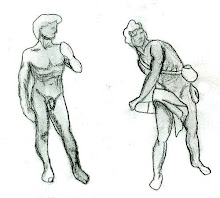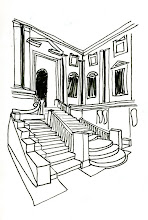Archetype/ prototype/ hybrid: (Pantheon)
Consistent with Roth (2007), “the Pantheon was the culmination of important experiments that had been pursued for over two centuries” (p. 259) This statement directly suggests that the Pantheon holds all evolutionary elements of: prototype- meaning original or first attempt; archetype- meaning an original type after a similar pattern from previous times, and hybrid- meaning something of mixed organ or a collaboration of both.
In 2680-2560 B.C.E. the Pyramid of Giza was build with an upward stepping incline; one of the first structures to do so for over all support. It was around 500 B.C.E. that columns were introduced to the building world. An example of this would be the Parthenon 447-448 B.C.E. Moreover, in Athens, Greece one can find the Temple of Athena Nike which is and example of both the columns (located on the porch) and an in-closed building. Where as the first dome toped structure was the Pantheon in 118-c and later finished in 128 C.E. The Pantheon is a perfect example of hybrid architecture because it links both old world and new world elements of design; including the above talked about step incline, columns, and in-closed building.

Source: (citing work)
In light of current events it is important that all students and individuals cite where their work or where their inspiration has come from; this way the originator has been given due credit. As Susanne had mentioned in class “Imitation is the greatest form of flattery… but only when well documented.” Ah, words to live by.
In light of current events it is important that all students and individuals cite where their work or where their inspiration has come from; this way the originator has been given due credit. As Susanne had mentioned in class “Imitation is the greatest form of flattery… but only when well documented.” Ah, words to live by.
Entourage: (mosaic)
Entourage, similar to the French word “entourer” which is an –er verb meaning to surround; leads me to think of one part surrounded by many different parts, hence a mosaic. The first findings of mosaic pieces were found on the floors of important buildings or rooms in the Greek era. These mosaics usually consisted of tinny pebbles adhered with mud or clay.
It wasn’t until, according to Blakemore (2006), “the early period from c. 200 B.C. to 80 B.C. a great deal of attention was given to the use of the illusionistic emblema, a pictorial mosaic set into the decorative scheme of the floor…walls of this period were treated as solid, with little attention to any illusionism that would direct attention beyond the plane.” (p. 57)
Hierarchy: (Hagia Sophia)
According to Roth (2007), “…the thought of crowning Hagia Sophia with a dome related to the sanctity of the whole building as an earthly analogue to heaven…” (p. 275)
Everywhere and in everyday day life examples of Hierarchy can be found: let us take a day in the life of a student. Whiles walking down campus one can very quickly become aware of what buildings are more important then others simply by viewing how the building appears. It is likely that tall vertically erected buildings which are highly decorated are more likely to be buildings of importance than smaller undecorated buildings.
In accordance with size and shape one can also view the materials used as to where the buildings most important spaces are. In the Egyptian ruling area according to Blakemore (2006) “the primary surfacing material for walls was plaster applied to a base of brick or mud. Other materials and decorative techniques were contingent on the economic means of the resident.” (p. 9)
Take Haga Sophia for instance its grander is certainly larger than that of any building in its proximity and its dome shaped ceiling screams “I’m important!” One, with some knowledge of culture and/ or architectural trends could tell that this is a building for the Gods; almost as if to say heaven on earth. In addition to the dome shaped top, the Hagia Sophia comes equipped with four oblique/ wu-wu structures as well as an array of archways which are also key simplifiers that this building belongs at the top of the hierarchical order.
Order: (columns)
In keeping with the reading from Blakemore (2006), “The classical orders consist of the column with its base (generally), shaft, capital, and entablature (each with its constituent parts), and are classified by the capital as Doric, Ionic, Corinthian, or Composite.” (p. 28)
Each era has similarities with one another yet the difference in decoration can sometimes seam dramatic. The order of these columns can also be looked at as hierarchical and or hybrid. Because the Doric is the first it is then the prototype. Ionic is the archetype and Corinthian the hybrid.
In keeping with the reading from Blakemore (2006), “The classical orders consist of the column with its base (generally), shaft, capital, and entablature (each with its constituent parts), and are classified by the capital as Doric, Ionic, Corinthian, or Composite.” (p. 28)
Each era has similarities with one another yet the difference in decoration can sometimes seam dramatic. The order of these columns can also be looked at as hierarchical and or hybrid. Because the Doric is the first it is then the prototype. Ionic is the archetype and Corinthian the hybrid.














No comments:
Post a Comment